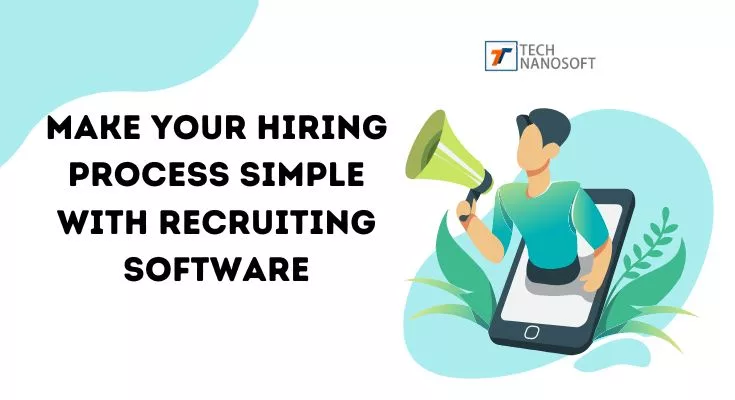Know About The AI Chasm: From AI Prototype To Product

Many companies slowly embark on the path to becoming data-driven companies by implementing data-based use cases as prototypes. But then they encounter a problem called “AI Chasm”: the scaling of this innovative work into an operational, comprehensive, self-evident process.
The topic around the AI Chasm deals with how to get from data-based prototypes to data-based products – and we present the levers that can be used to bridge this gap.
What is the AI Chasm, and why is it essential for companies?
“AI Chasm” is the challenge of lifting artificial intelligence from prototypes into a standard tool of a company. Many organizations in the field of AI are currently in the “trial” phase but face the challenge of turning this data-based work into scalable products and services.
It is no secret that artificial intelligence is now becoming one of the essential digitization technology topics. Therefore, pretty much every company deals with the potential of their data and the effect of machine learning algorithms.
Some employ their own data scientists, and others investigate the topic with external support. No matter which way, prototypes and proofs of concepts are slowly making their rounds to convey the advantages of artificial intelligence in every company.
Usually, it is more of a gimmick or a project that will not be pursued after the test phase. But the benefits of machine learning are becoming more and more apparent, and then a simple question arises: How can this approach be scaled? Whether a single use case or the entire topic of “data science”: There is an immense difference between an assembled prototype that runs locally on a MacBook and a profitable operational product for the company.
This gap between “tried something” and “something operationalized in the company” is called “AI Chasm” or, in English, “KI gap.”
The three aspects of the AI Chasm
What is the difficulty in overcoming the hurdle from prototypes to products? We primarily see three factors that have to be resolved before the “AI chasm” in the company can be overcome.
ENABLEMENT: THE ABILITY TO IMPLEMENT DATA-BASED PRODUCTS AND KEEP THEM RUNNING
The most fundamental aspect of bridging the “AI chasm” can be seen as enablement – i.e., the fundamental ability to work with data. There are several aspects to consider here. The focus of the command is, of course, the data science expertise.
This knowledge is the single factor against which the success or failure of a data-based product can be measured. Only those who have a deep understanding of use cases and algorithms can anchor AI as a sustainable tool in the company.
While the expertise factor primarily relates to the so-called preparation of successful implementation, the best data science experts are of little help if the resulting product cannot be integrated into the IT system landscape.
It is necessary to set up, establish, standardize and manage a significant data infrastructure. The focus here is mainly on data architects and data engineers who, together with enterprise architects or solution architects, set up the data infrastructure and enable deployment (i.e., the operationalization of machine learning code, for example).
This thought is often on the mind of chief data officers or equivalent roles. The next step, however, often goes under. Because in addition to infrastructure and technical expertise for processing data science use cases, you also need staff who take over monitoring and maintenance after deployment.
This task is usually carried out in the so-called DevOps departments. However, since they often have no explicit knowledge of machine learning model deployment, a new area called ML-Ops or Data Ops is gradually emerging.
The experts in this area can set up infrastructure and monitor the availability of the models and, above all, their performance. The experts in the ML-Ops division, therefore, also deal with the so-called “Concept Drift.” The machine learning model can no longer adequately represent reality.
As a result, the predictions get worse, and therefore the model or a new one must be trained.
There are many more enablement topics that fall into the category of “ability” for data-driven work. However, the three mentioned aspects are sometimes the most difficult to bridge the AI chasm.
Other important topics are, for example, data governance, budget responsibility, the organizational establishment of the data area, and much more.
THE CULTURE: THE WILLINGNESS AND WILLINGNESS TO WORK BASED ON DATA
Once you have solved the fundamental enablement problems and created the ability to work with data, there is still another comprehensive challenge to overcome the AI chasm.
The so-called will or culture. A complete data culture is a prerequisite to breaking out of the ivory tower of technological innovation and creating a far-reaching understanding on the one hand and a broad acceptance of data-based products in the company on the other.
Establishing a data culture is often even more complex and more relevant for successfully overcoming the AI chasm than comprehensive enablement. An excellent quote in this context is “Culture eats strategy for breakfast.”
Because only if the culture allows it, strategic issues can also be implemented in the best case, even favors it. The “crowbar” rarely leads to success but often creates resistance.
So why is a far-reaching data culture influential, and what does it include? Generally, there are two parts to a sustainable culture for data-based work. First, the knowledge of whether the methodology, the procedure, the advantages and disadvantages, and the potential of data science as a broad topic must be established and disseminated.
This creates an understanding that goes beyond popular scientific information and forms the basis for the second part. This is the complete acceptance of data-based products and their effects.
Because only if the company has a benevolent attitude towards big data and AI predominates it is possible to show the advantages and operationalize the gain inefficiency. Fear must be taken away, and the desire for innovation fueled. Then you have the opportunity to lead data-based work to success.
SUCCESS: HOW CAN THE SUCCESS OF DATA-BASED WORK BE MEASURED AND USED AS FEEDBACK?
The third aspect of bridging the AI chasm is creating, documenting, and playing back success. The principle is straightforward: If you manage to make success measurable and play this quantified success back into the company, you have direct positive feedback on both the willingness to enablement and the promotion of the data culture.
Regardless of whether it is the board of directors, management, or team: The question of “why” and “what does it bring us” should always be asked. And these questions need to be answered.
In addition to strategic importance and future viability, there are also more tangible options such as defining KPIs, measuring the success of data science use cases, and promoting the successful implementation of use cases in the company.
In addition to culture and enablement, the AI Chasm is always one thing: a question of success. And the most convincing argument for most people is still tangible, easily and quickly understandable success.
It is therefore essential to continuously look for ways to make this success measurable. Because then many colleagues see the utility value very practically instead of just theoretically






